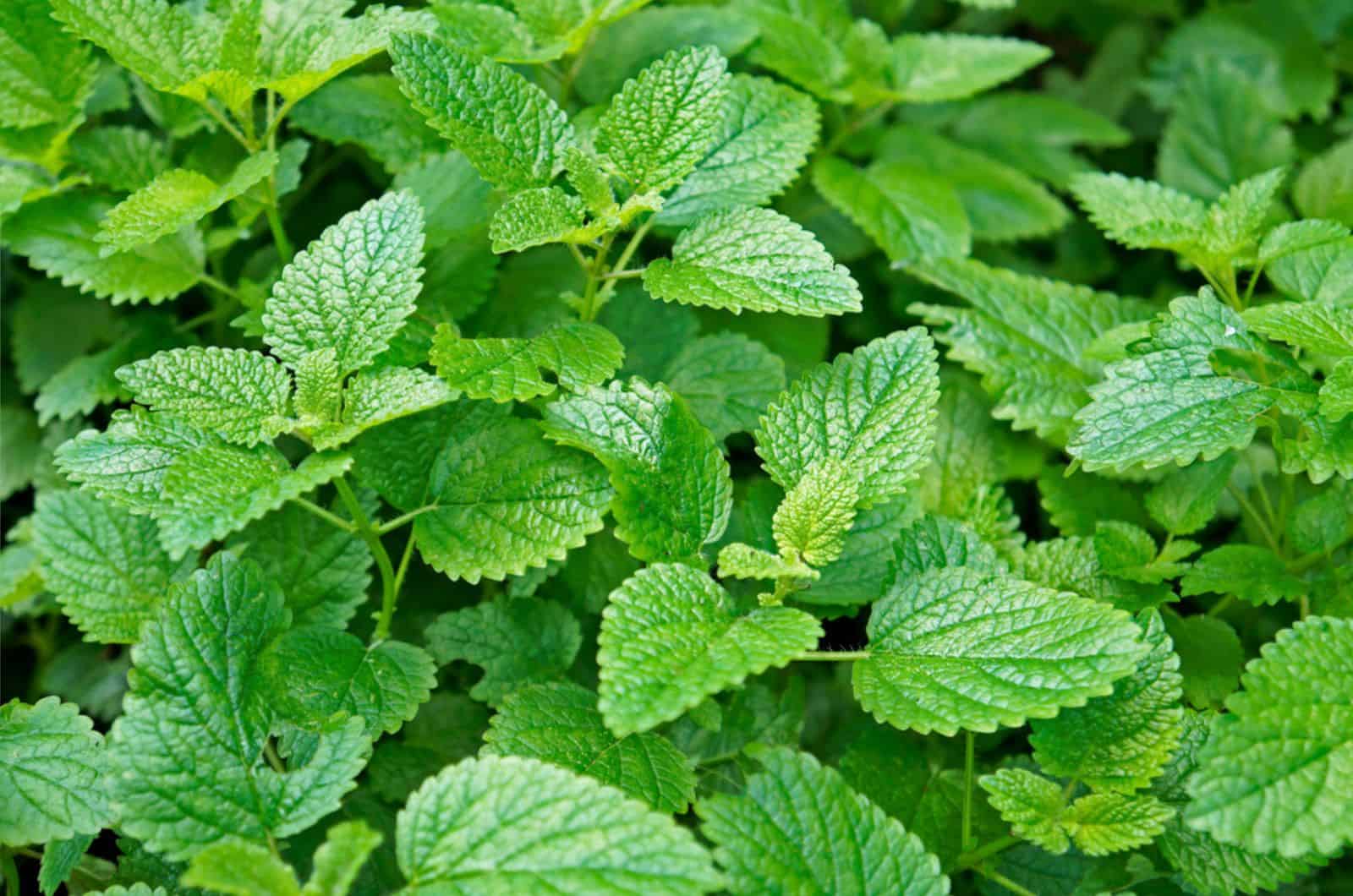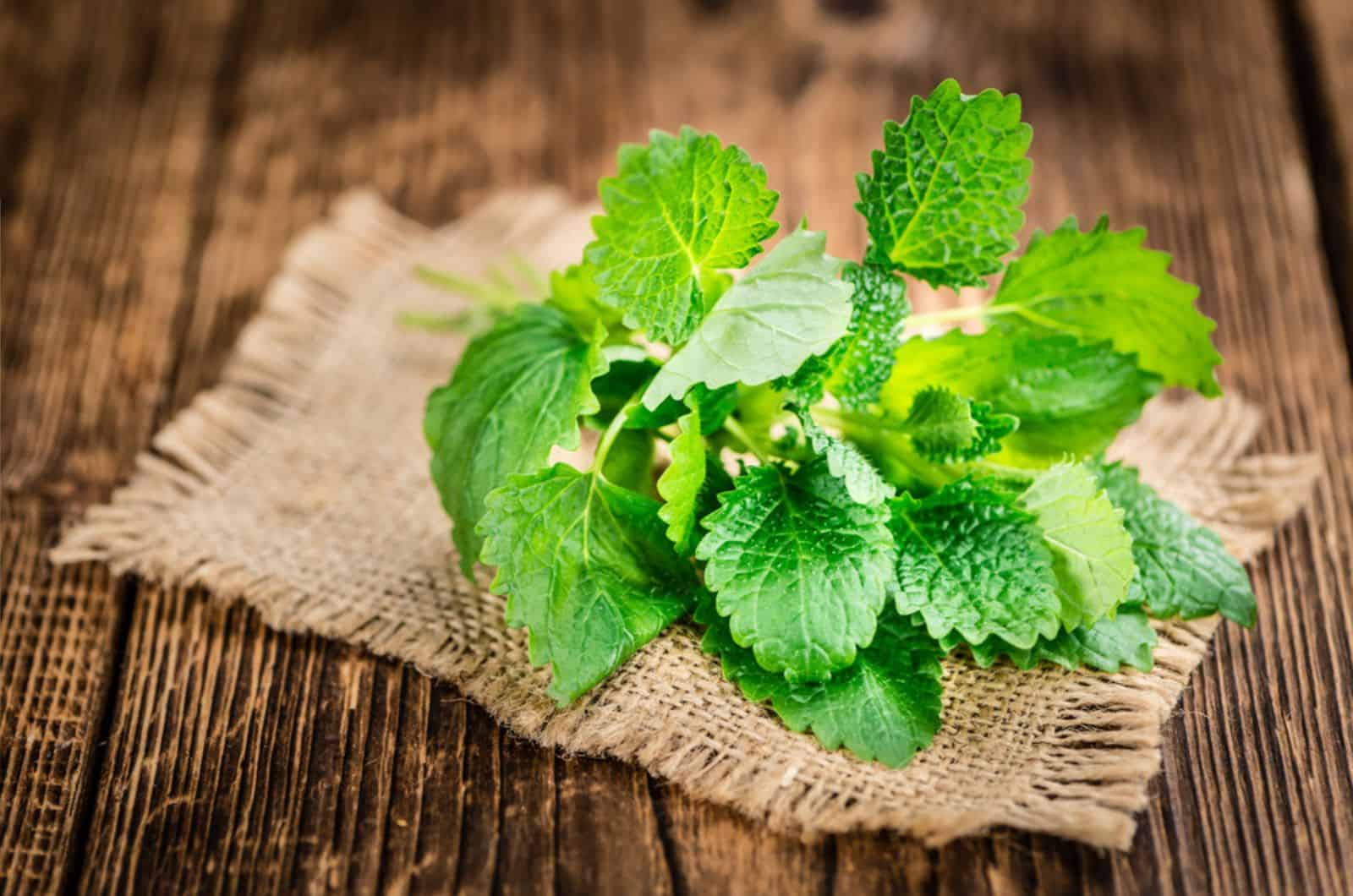I’m sure most of you have drunk mint herbal tea at some point in your life or have used mint as a spice in one of your favorite dishes. If nothing else, you must have heard of this plant, for sure.
On the other hand, lemon balm – or bee balm as it can also be called – is a slightly less popular herb. But, seeing as you stopped by to read this post, there is a very high possibility that you know something about this little-known plant, considering that the title is lemon balm vs mint.
The large number of similarities between these two herbs probably led you to this text. But the point is that, as much as these two herbs are similar, they also have a large number of differences.
And, of course, for many important reasons, especially those related to culinary use, it is important that you know the differences.
That’s why in this text I will go through the characteristics of these two plants together, their similarities and differences, and I will show you some interesting facts related to both herbs, especially in terms of health benefits.
Lemon Balm Vs Mint: Their Similarities And Differences
In order for you to better understand the differences between lemon balm and mint, I decided to divide the analysis and comparison of these two herbs into 5 categories, starting with the category that includes general information and a comparison of these two herbs.
So, let’s proceed.
1. General Comparison

This general comparison represents a sort of introduction to more detailed analysis and comparison of these two herbs. The fundamental thing that mint and lemon balm have in common is that both of these herbs are of Mediterranean origin.
This means that they come from a geographical area called the Mediterranean which is located in the southeastern part of Europe, but what is even more important in this case is that it belongs to a well-known way of eating called the Mediterranean diet.
Another key fact related to lemon balm and mint is that both of these herbs come from the same family of herbs, namely the mint family. The mint family is a part of the bigger family called the Lamiaceae family.
So it is not a surprise that these two types of herbs are interchangeable, i.e. lemon balm is one of the best mint substitutes and vice versa.
But, one thing that is also important to emphasize is that, when it comes to the types of these incredible herbs, there is only one type of lemon balm.
And it is called Melissa Officinalis. On the other hand, there are 40 varieties of mint. Some of the most popular types of mint are peppermint, spearmint, apple mint, chocolate mint, Corsican mint, water mint, and pineapple mint.
2. Their Appearance
I will start with their appearance on the basis that it is very difficult to find the differences between these two herbs.
• Flower color: White, purple, or yellow are generally the colors of lemon balms flower.
On the other hand, mint flowers can be purple or white.
• Flower structure: Flowers of lemon balm have oval petals and they open on the leaf axis when they bloom.
Mint flowers are little flowers with spikes and they also grow with spikes.
• Leaf color: Mint and lemon balm leaves are both a green color that can range from light green to dark green in some variations.
• Leaf texture: The leaf texture of these two herbs are quite similar, though lemon balm leaves have slightly sharper edges than mint leaves.
• Stem color: Lemon balm stems are predominantly light green.
When it comes to the color of the mint stem, it can range from green to purple based on the type of mint.
• Stem type: The stem type of these two herbs is the same. Both of them have an herbaceous stem. Herbaceous means that it is flashy as opposed to woody.
3. Flavor Differences
It is not a surprise that lemon balm tastes like lemon with a mild flavor of mint and has a lemon scent. I am saying this because this herb got its name from the taste of lemon.
Better said, it has a bright flavor with a bit of sweetness, so it is not only a good option for savory dishes but for sweet dishes too. Lemon balm also has a nice citrus aroma making it perfect for seafood.
On the other hand, mint predominantly tastes like menthol. This is one sharp and cooling taste with a bit of sweetness. Menthol has some kind of pain-killing effect and it can produce a cooling sensation on your tongue.
There is only one type of lemon balm, so there is only one flavor of this herb. As for mint, there are a lot of variations in the taste just as there are a lot of variations in the type itself.
In the end, I must emphasize that menthol is actually a chemical that is responsible for that sharp and cooling taste of mint. On the other hand, chemicals called citral and citronellal are responsible for the lemony and minty taste of lemon balm.
4. Nutritional Values

Besides their rich flavor and beautiful aroma, lemon balm and mint also possess a high nutritional value. They are full of vitamins and minerals, which is exactly what they are best known for.
I will start with lemon balm. Their leaves are important. They are low in cholesterol and in fat. They possess a great number of antioxidants, and those are flavonoids and phytochemicals like rosmarinic acid, terpenes, caffeic acid, and phenolic acid.
When it comes to vitamins, lemon balm has a high level of vitamin C and thiamin (Vitamin B).
In 100 grams of dried lemon balm, there is 172.8 kcal, 4 g of fat, 126 mg of sodium, 1404 mg of potassium, 32 g of carbohydrates, 13 g of proteins, and no cholesterol.
Just like lemon balm, mint also possesses a high number of antioxidants. It also contains trace amounts of magnesium, potassium, calcium, iron, phosphorus, and vitamin C.
In 100 g of dried mint, there is 280 kcal, 6 g of fat, 340 mg of sodium, 1920 mg of potassium, 52 g of carbohydrates, 20 g of protein, and also no cholesterol.
So, you can see from this data that mint has a higher amount of fat, sodium, potassium, carbs, and protein. On the other hand, cholesterol is zero in both herbs.
5. Usage
There is a big range of possibilities when it comes to the usage of lemon balm and mint.
First lemon balm. It is a very versatile herb. It can be used in sandwiches, salads, and soups, and it can be added to poultry, fish, and pork dishes, or to desserts such as cakes, ice creams, cookies, and pies. You can also use it to add some refreshing flavors to your cocktails.
Lemon balm also finds its place in cosmetics. It is a great ingredient for skin care products like salves, hair rinses, and bath bags.
There are also some interesting, less common, herbal remedies like lip balm for cold sores, lemon balm bag spray, relaxing lemon balm bath, and ginger and lemon balm cold syrup.
Also if you don’t have any curry leaves, you can use lemon balm leaves as a great curry leaves substitute.
Mint, on the other hand, is not that versatile when it comes to culinary uses and it is most commonly used as a tea, spice, or decoration.
When it comes to cosmetics, it is best used as an essential oil and as an additive in dental products.
Mint can be used in tobaccos, perfume oils, and for additional liquor flavoring. You can make your own mint syrup, use mint as an insect repellent, or chew for fresh breath.
All in all, there are many ways to use either of these two amazing herbs, whether it’s culinary, cosmetics, or protection from unwanted insects.
Incredible Health Benefits Of Both Plants

And finally, there are the health benefits of lemon balm and mint. And you will see that they are really amazing. As you could already see earlier in the text, both of these plants are full of nutrients and, therefore, very healthy.
Lemon balm is best known for its good effects on the brain. It can increase mood and enhance cognitive functions. But, these are only one of the benefits that this plant brings, whether you consume it in the form of tea, as a spice, or as a supplement.
Other health benefits include:
• It can relieve symptoms of stress
• It is suitable for anxiety
• It can relieve sleep disorders such as insomnia
• It can relieve indigestion
• It helps with menstrual cramps
• It can ease headache pain
In terms of health benefits, mint is very similar to lemon balm, considering that it is also good for the brain and for relieving stress. The previously mentioned menthol is the main component responsible for the stress-relieving powers of mint.
And of course, there is more that mint has to offer when it comes to health:
• It may improve IBS (Irritable Bowel Syndrome)
• It can relieve indigestion
• It can decrease breastfeeding pain
• It may improve cold symptoms
• Eating dried leaves stops bad breath
As you can see, both of these herbs have amazing health properties. Perhaps, it could be said that lemon balm is slightly ahead but, all in all, these are very small differences, and consuming either of these herbs will offer you a very wide range of health benefits.
Do You Grow Lemon Balms?

Yes, you can grow lemon balm plants! It is a bushy perennial herb that is easy to grow in the sun or light shade and whose flowers attract bees and other pollinators.
Lemon balm is grown from seed in spring and that seed is sown indoors from March to May. When the sprouts appear, it is important to immediately prick the seedlings into individual pots and transplant the young plants outdoors when the danger of frost has passed.
It is essential that you keep plants well watered during dry periods of summer. They must also be planted in well-drained soil and in the sun.
It can also be planted into large pots filled with soil-based compost.
What Plants Are In The Same Family As Mint And Lemon Balm?
Plants that are in the same family as mint and lemon balm include oregano, basil, lavender, thyme, monarda citriodora, sweet marjoram, sage, savory, germander, anise hyssop, and rosemary.
In the mint family, all plants are related in some way and have certain similarities. For example, mint is one of the main substitutes for rosemary.
Also, they are realistically one of the most popular plants in the world of cooking and are most often used as an irreplaceable component in numerous delicious dishes.
There is also one interesting fact in that there are some members of the mint family that aren’t herbs at all, and those are ajuga, coleus, obedient plant, and salvia.
To Sum It Up
Taking into account all the above information extracted from the lemon balm vs mint comparison, you can conclude for yourself that there are not too many differences between these two members of the mint family.
However, if you are planning to use one of these incredible herbs for culinary purposes, you definitely have to know the differences, of which there are not many, but of which there are still enough to make it necessary to know for the best results.
